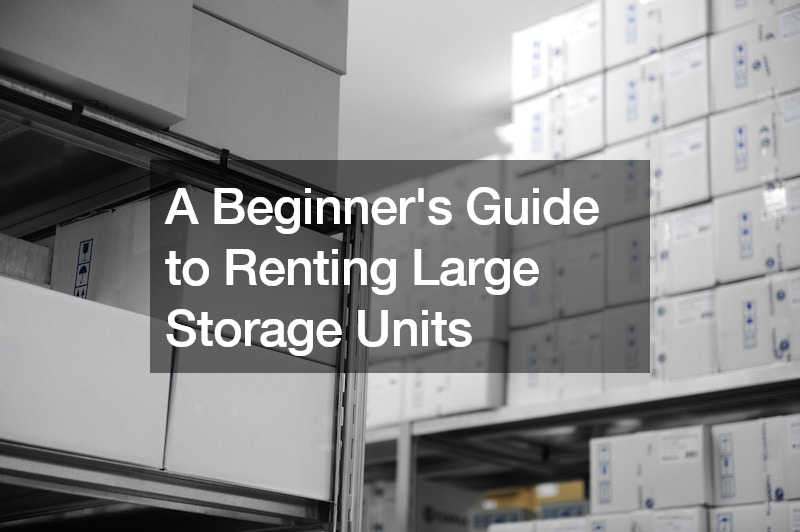
Are you drowning in clutter? Maybe you’ve outgrown your current space or need somewhere to store your belongings temporarily. Whatever the reason, renting a large storage unit could be the solution you’re looking for. But before you dive in, it’s essential to understand the ins and outs of renting these oversized spaces. Here’s a beginner’s guide to help you navigate the world of large storage units.
Choosing the Right Size
One of the first decisions you’ll need to make when renting a storage unit is determining the size you need. Large storage units come in various sizes, typically measured in square feet.
It’s crucial to assess your belongings and estimate how much space you’ll require.
Consider items like furniture, appliances, boxes, and any other large possessions you plan to store. If you’re unsure about the size, many storage facilities offer size guides or have staff available to assist you in choosing the appropriate unit.
Remember, it’s better to err on the side of caution and opt for a slightly larger unit than you think you need to avoid cramming your belongings into a tight space.
Location, Location, Location
Another factor to consider is the location of the storage facility. Ideally, you’ll want a facility that is conveniently located near your home or place of business. This proximity makes it easier to access your belongings whenever you need them.
Additionally, consider the security of the location. Look for storage facilities that offer features like gated access, surveillance cameras, and on-site security personnel to ensure your items are safe and secure.
Understanding Rental Agreements
Before signing on the dotted line, it’s crucial to understand the terms of the rental agreement. Take the time to read through the contract carefully and ask questions about anything you don’t understand.
Pay close attention to details such as the length of the rental period, payment terms, and any additional fees or charges. Some storage facilities may require a deposit or charge late fees for missed payments, so be sure to clarify these terms upfront.
Organizing Your Belongings
Once you’ve secured your storage unit, it’s time to start organizing your belongings. Take inventory of everything you plan to store and create a plan for how you’ll arrange items within the unit.
Consider investing in shelving units, storage bins, and other organizational tools to maximize space and keep your belongings neatly arranged. Labeling boxes and keeping a detailed inventory can also make it easier to locate specific items when you need them.
Maintaining Your Storage Unit
Regular maintenance is essential to keep your storage unit in good condition and protect your belongings from damage. Periodically inspect the unit for signs of pests, leaks, or other issues that could compromise the safety of your items.
Keep the unit clean and free of clutter to prevent pests and mold from taking hold. If you notice any problems, notify the storage facility immediately so they can address them promptly.
Accessing Your Belongings
One of the benefits of renting a storage unit is the ability to access your belongings whenever you need them. Most storage facilities offer extended access hours, allowing you to retrieve items at your convenience.
Before visiting the facility, be sure to check their access policies and hours of operation. Some facilities may require you to provide advance notice or schedule appointments for access, so it’s essential to plan ahead.
Considerations for Long-Term Storage
If you’re planning to store items for an extended period, there are a few additional considerations to keep in mind. Make sure to choose a storage facility that offers climate control to protect sensitive items from temperature fluctuations and humidity.
It’s also a good idea to periodically check on your stored belongings to ensure they remain in good condition. Consider visiting the unit every few months to inspect for any signs of damage or deterioration.

Ending Your Rental Agreement
When you no longer need the storage unit, be sure to follow the proper procedures for ending your rental agreement. Give the facility sufficient notice of your intention to vacate and remove all of your belongings from the unit.
Before leaving, clean out the unit and remove any trash or debris to avoid additional fees. Once everything is cleared out, return the keys to the facility and ensure that your account is settled.
Renting a large storage unit can provide a convenient solution for storing excess belongings or decluttering your space. Whether you need temporary storage during a move or a long-term solution for storing seasonal items, a large storage unit can help you reclaim your space and keep your belongings safe and secure.



